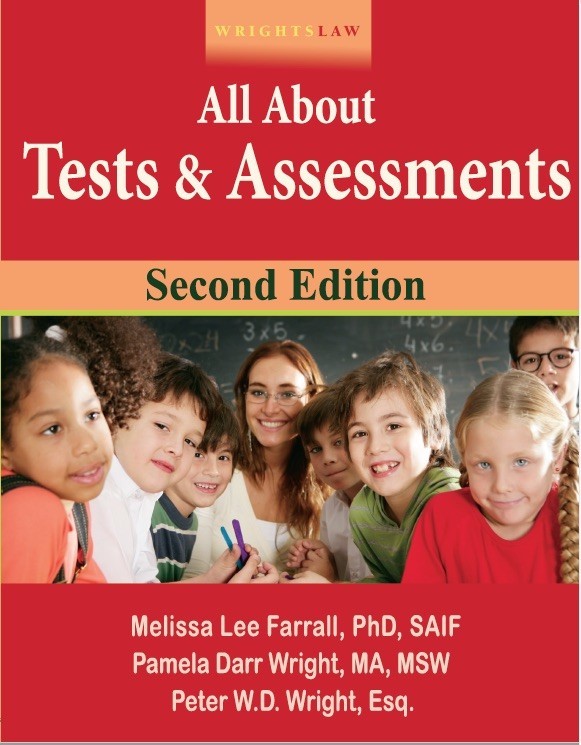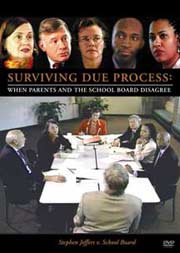 Third-grader Tylor Goshorn sometimes writes letters or numbers backward. She has trouble with simple directions and lags a year behind her class in reading. Her parents suspect that she might have a learning disability and that she would be better served by smaller classes and more intensive instruction from special education.
Third-grader Tylor Goshorn sometimes writes letters or numbers backward. She has trouble with simple directions and lags a year behind her class in reading. Her parents suspect that she might have a learning disability and that she would be better served by smaller classes and more intensive instruction from special education.
But the Loudoun County school system has balked at testing Tylor for a possible disability. Instead, the schools have arranged for a reading specialist for the 9-year-old, a special computer program for math, even a seat in the front of her classroom. These alternative steps reflect a growing national movement to contain one of the costliest programs in public education. After three years of such efforts, the Goshorns aren't satisfied.
"We feel like we are chasing our tails here," said Jereme Goshorn, her mother. "It's obvious there's something wrong."
Since a 1975 federal law gave students with learning disabilities a right to special education, the number of learning-disabled students who receive such services has risen to 6 percent of the public school population. The figure was less than 2 percent in 1977.
Many educators say learning disabilities have been over-diagnosed and are seeking ways to address learning difficulties in mainstream classrooms, rather than addressing them through special education for as much as twice the cost. Loudoun officials estimate their cost per pupil in special education is $22,000 a year, compared with $12,000 for most students. One cost-saving method drawing attention is known as "response to intervention."
For many school systems, RTI-influenced strategies have led to a significant drop in the number of special education students. In Charles County, special education enrollment has fallen to 8 percent from 12 percent in 1999. In Frederick County over the same period, the rate dropped to 11 percent from 17 percent. Loudoun's rate fell to 10 percent from 12 percent in 2001. The national average is about 14 percent.
The new approach has led to a backlash among parents who say their children aren't getting the help they need. A parent-led advisory committee told the Loudoun School Board in the fall that the school system appeared to be under-identifying students who should qualify for special education.
The shifts in Loudoun and elsewhere have been propelled by a 2004 rewrite of the federal special education law. The revisions allowed school systems to use the RTI model as a path toward identifying learning-disabled students. Schools also were allowed to redirect up to 15 percent of their special education money to help struggling students in regular classrooms.
To identify learning-disabled students, schools traditionally have compared IQ scores with achievement test results. Sometimes it can take years for significant disparities to surface. The RTI model targets students with problems early on, offering them instruction beyond the general curriculum, such as tutoring or additional math or reading programs. Teachers carefully monitor progress. If students don't improve after a series of increasingly intensive measures, they are considered for special education.
This month, the U.S. Education Department organized a national summit in Arlington County for educators to learn about the RTI strategy. The government plans to spend $14 million over five years to help states launch the new approach.
Many Washington area systems are headed in that direction. In Prince George's County, where 10 percent of students are in special education, schools offer struggling students multiple levels of instruction and support before considering special education. The Montgomery County system, with a 12 percent special education rate, has launched a similar initiative in more than a quarter of its schools. Alexandria, with a 17 percent rate, is piloting an alternative approach in one school. In the District, where the rate is 18 percent, officials plan to roll out a new program in 16 elementary schools by next fall. In Fairfax and Prince William counties, where 15 and 11 percent of students, respectively, are in special education, officials say plans for a new approach are afoot.
The national movement reflects the emphasis on quality teaching and on raising student achievement in the federal No Child Left Behind law, said William W. Knudsen, deputy assistant secretary for special education and rehabilitative services. Too many students, he said, are funneled to special education because they have not been taught appropriately or have not been well prepared for school.
"Maybe their parents work two jobs and just don't have time to read a book to them at night," he said.
Many school systems, including Loudoun, have sought to revamp general education programs in response to concerns about high numbers of minority students who flow into special education. African Americans make up about 8 percent of Loudoun students, but they constituted about 12 percent of the county's special education population last year.
"It's easy to reduce the numbers of children in special education programs. You just have to stop referring them," said Douglas Fuchs, a professor of special education at Vanderbilt University. What's harder, he said, is finding and implementing programs that will help students in the classroom.
Advocates for students with learning disabilities say there is too little research about how the RTI strategy works for middle or high school students and not enough teacher preparation. Many parents worry that their children will tread water in regular classrooms while disabilities go undiagnosed.
"So much is placed upon teachers today. Here's yet another burden for the teacher to get kids lined up and identified. . . . Are they just management problems? Are they late bloomers? Are there sociological issues? There's a tremendous amount of information teachers need to sift through," said Charles Giglio, president of the Learning Disabilities Association of America, a group that represents parents of learning-disabled children.
Giglio said schools should offer students who show signs of possible disabilities a battery of psychological and educational tests as early as possible to pinpoint problem areas and help guide teachers. Federal law allows parents to request an evaluation at any time, but many parents are unaware of that right, he said.
Loudoun special education officials said they are reluctant to refer anyone to testing before trying interventions first. "We try to make smart referrals," said John J. Lody, diagnostic services supervisor.
Last year, of about 2,200 students monitored in the classroom, 1,800 were referred for special education evaluations, he said. About three-fourths of those were found eligible.
Some parents seek help from professional advocates or pay for outside testing, which can cost thousands of dollars. Stacey Russello of Lovettsville took her son Miles Banister to be tested at Yale University two years ago. Results showed that the sixth-grader performed at or above grade level in many areas but was at the second-grade level in spelling and written expression.
When he was younger, Miles had attention-deficit disorder diagnosed, and he attended a private school for learning-disabled students, as did his brother, Christian, who had dyslexia diagnosed. When they came to Loudoun more than two years ago, both were enrolled in general education. His younger brother adapted easily to a regular classroom with a little help. Miles had a harder time. He needed more help in the classroom, and the support was inconsistent, his mother said. So were his grades. He came close to failing last school year.
One recent evening, Miles, 14, glued plastic parts to a Styrofoam car he was building for physical science class, and his mother pointed to an open weekly assignment book on the kitchen counter with several past-due assignments written in barely legible handwriting. Miles said he is distracted by the tiniest sounds from the computer or the air conditioning in his classrooms at Harmony Intermediate. Even with extra help from the school -- he can use his laptop in class and is given extra time on tests -- he said that homework piles up in his locker and that he feels overwhelmed by the workload.
"At first it was hard to manage. Now I just can't seem to get it right," he said.
Russello said she thinks Miles would be better served in special education, with a longer-term, Individualized Education Plan. At her request, a team of teachers and school system staff members recently agreed to refer him for eligibility screening, and a meeting is scheduled for February.
Philip and Jereme Goshorn are hoping for a similar meeting but said they are still in "wait and see" mode, watching for signs of improvement in the regular classrooms. Tylor's grades, usually average or better, took a dip this term.
Philip Goshorn said he struggled through school himself when he was growing up in Loudoun. At the time, he remembers feeling less capable than his classmates, like he was "not college material."
He repeated his junior year and saw a specialist at the University of Virginia, who identified some short-term learning problems. He is worried his daughter might have to wait too long for the right kind of help.
Goshorn said he and his wife have been looking for answers for three years now. "Instead of looking at symptoms, let's look at the cause of the problems," he said.









